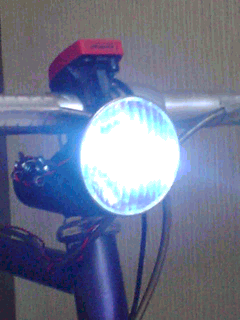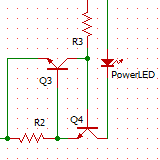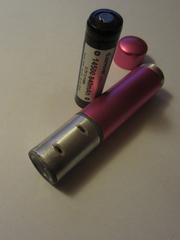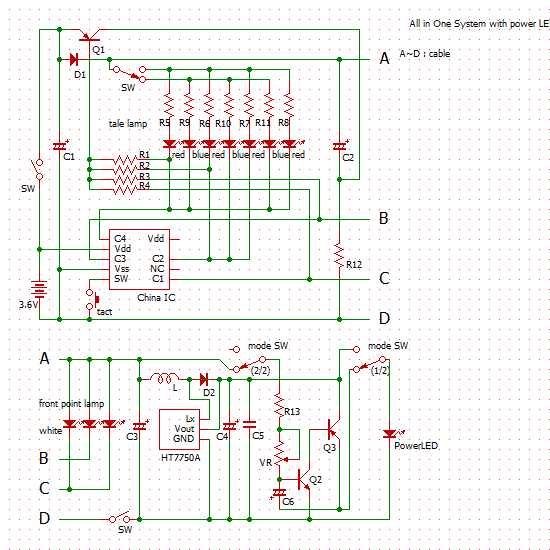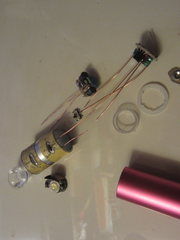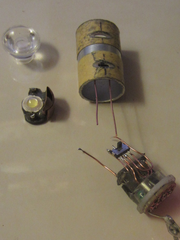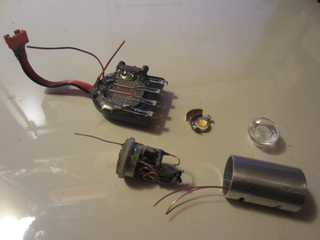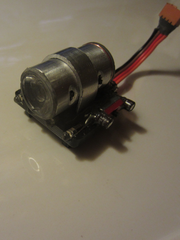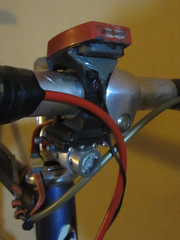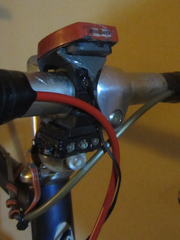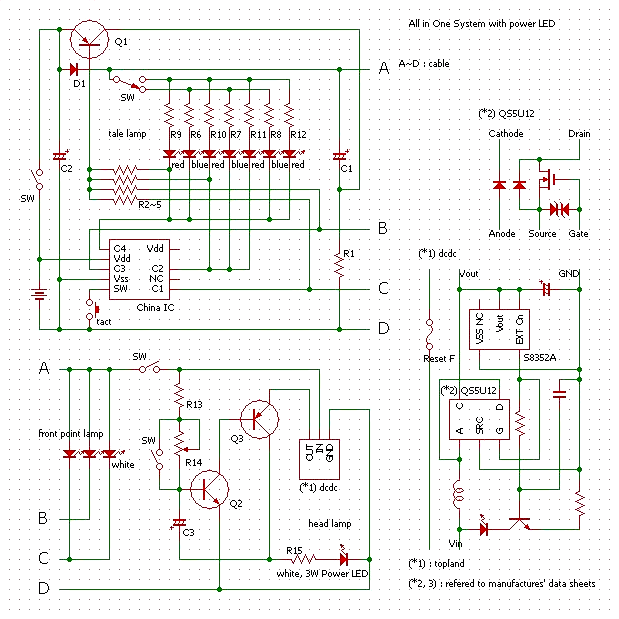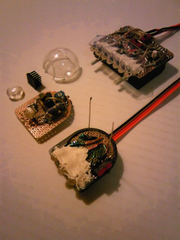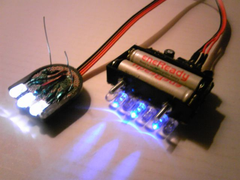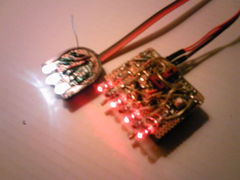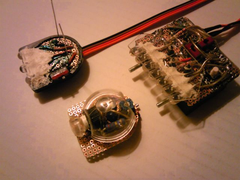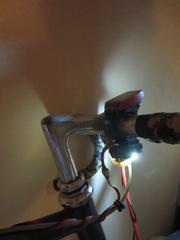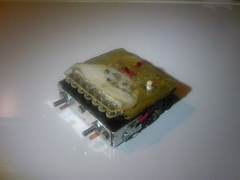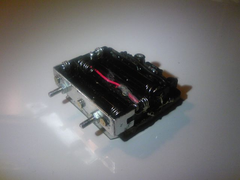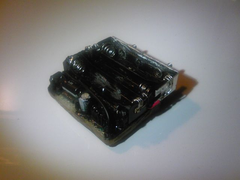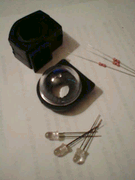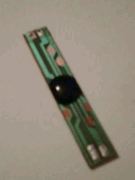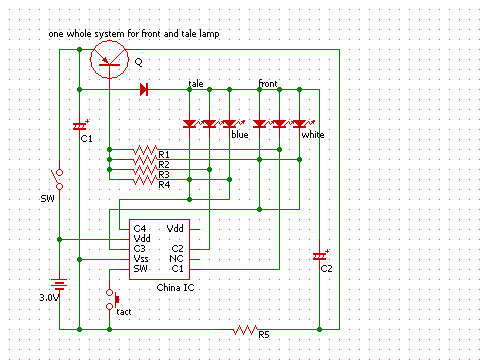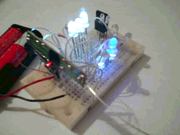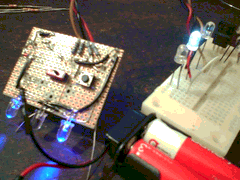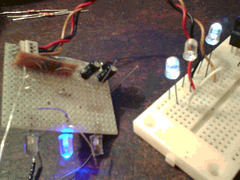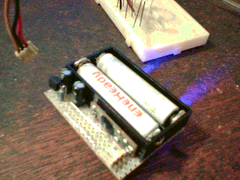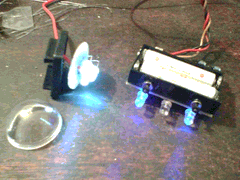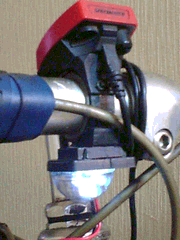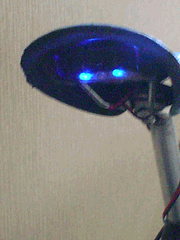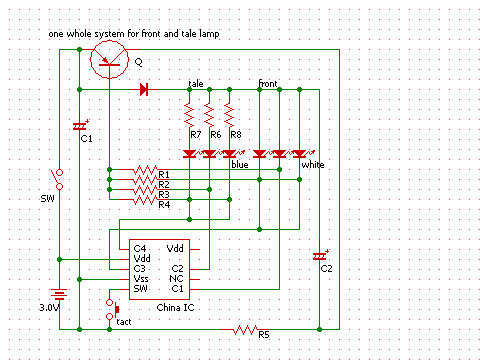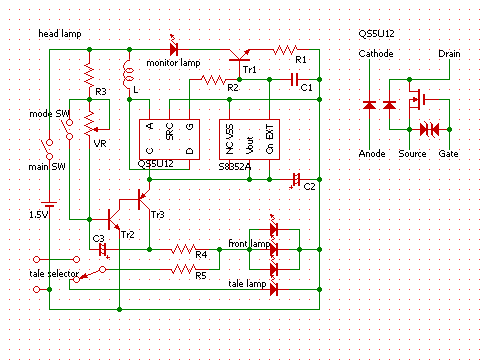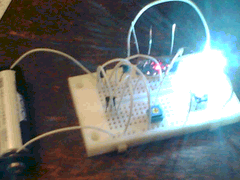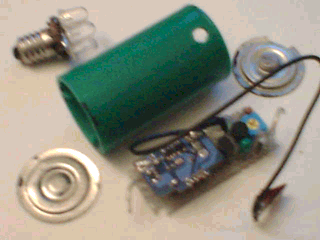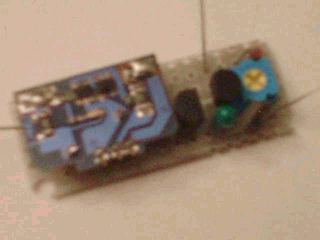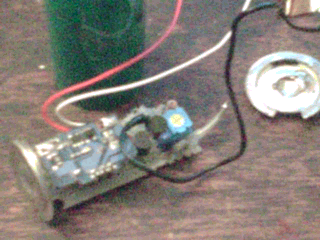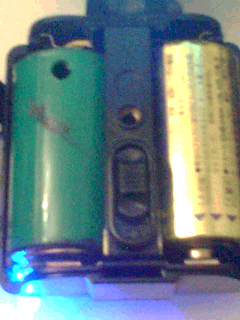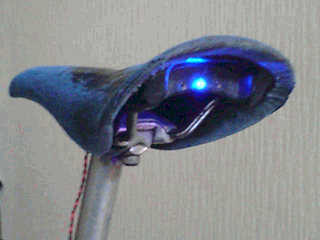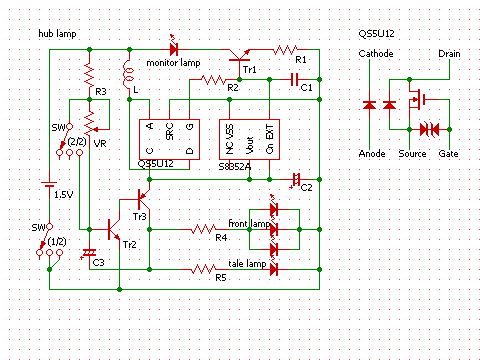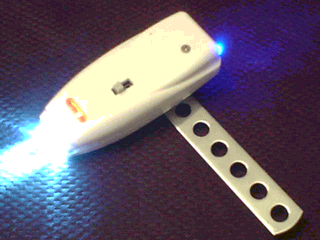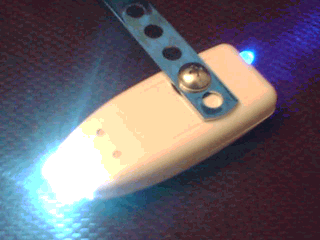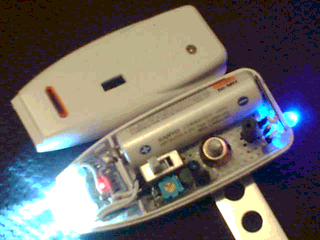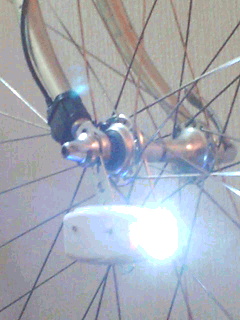A small front lamp could be made due to make in common system of front and tail lamp. In case of that battery and circuit would be mounted to the tail lamp. Front, around handle, is desired to be neat and clean especially for a roadbike or a sport typed bicycle.
There are many merits due to use the battery and the circuit in common. I had wished to use a security alarm in common though I couldn't find a good shell for it inmounted to a saddle.
As for a left picture there are parts of a head lamp. It would be most small class one in guessing. The battery and the cicuit would be installed to the unit inmounted to a saddle.
Of course bombshell LEDs could be inmounted to an atatchment or a holder though there is not reason to make so small.
Demerit of that is the cable which should be brought out and be splined in top tube.
Bombshell LEDs could be inmounted to any parts even if it's small part, e.g. a mounter of cycle computer, any belt, a brackets, and so on.
It's might be good to affix a plate mounted high performance LEDs to around head, to make an atatchment for bombshells, and so on.
At the end of consideration, --
I made an atatchment to be mounted to bottom of the belt of a cycle computer. It would be possible to take off and be in the shade. Around the head would be clean too. As for the atatchment, it was already made for another mono-head lamp.
There is a right IC to be diverted which is made in China, and has seven patterns of flash, is used for a cheap tail lamp and toys.
There are two types as old and new. New one has four control lines which is convenience to divide to front and tail. Old one has three control lines in which case it's good to use one line in common of front and tail.
Old and new chips have same count of pins. Old chip has five pins for three control lines, new one has four pins for four control lines and has one NC pin. New one come to stand higher voltage than old one.
Its basement come to be used better material.
Cut its basement with enough margin as a right picture. It could be cut more small for installation.
Divides control lines to front and rear.
It's aim to charge pump due to oscillation without dcdc circuit, which could turn on lighting white and blue LEDs by two NiMH cells.
Focal points as follows:
- charge pump due to oscillation
- turn on/off due to one motion of a switch
- fixed flash pattern selected
- prevention momentary power off
Cause one flash time is very short by the IC, resistors as current limiter are no need. Its efficiency would be good in guessing.
It might be better to use resistors for blue LEDs. It's a matter of taste though a blue LED has high visibly respect to illumination.
As usual, tested on a breadboard. At first I used a dcdc though, which could not flash as expected. It could not turn off completely. I did investigation of cause, but I couldn't find it.
And I decided to adopt the charge pump method.
As a matter of fact, at the outset I had an intention to use a dcdc cause that's easy and simply. And I changed the plan to design the charge pump used oscillation. Thus I couldn't test the circuit on a breadboard well.
On a basement checked.
Cut the basement kinda larger than battery box and mounted some parts on it.
It needs a cable with three wires and put a connector on it. Three wires are for Vdd and two collector control lines.
It could be used as mono-tail lamp without cable to the front lamp.
Heaped LEDs of a front lamp. It's interesting that the flash lighting is moving ups and downs.
Set the front lamp as a right picture.
The light set to an atatchment mounted on bottom of a holder of a cycle computer. That's small and in shade.
As for an acrylic dome, it has visibly for side angle lower illumination though.
A tail lamp inmounted to a saddle.
Flashing due to momentary lighting is so pretty.
this way. Installed resistors for blue LEDs of a tail lamp.
A blue LED is easy to secure visibly respect to its illumination.
Resistors as current limiter of a tail lamp would make electric power margin for a head lamp, cause charge pump due to oscillation. That's efficiency in guessing.
